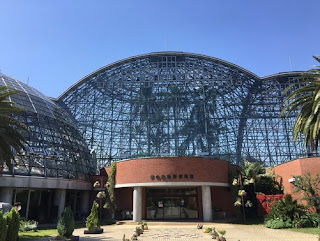Most of the leaves, however, remain as green as ever here in the gardens in Tokyo's Koto City. Some maple leaves have already begun showing a little change in their colors.
In the late 19th century, Iwasaki Yataro, the founder of the Mitsubishi Group, obtained a wide swathe of land, in order to make recreation facilities for his company employees and build a Japanese-style guest house to welcome dignitaries. Nice stones were collected from around the country and brought by ship. It took three generations of the Iwasaki family to lay the foundation of the present gardens.
The Iwasaki family later donated the gardens to the City of Tokyo. The Gardens were opened to the public in 1932.
The Kiyosumi Gardens were once used as a place for evacuees after the Great Kanto Earthquake of 1923 and the Tokyo air raid by the U.S. forces in March 1945.
Kiyosumi Gardens:Kiyosumi 3-3-9, Koto City, Tokyo 135-0024
Access: 3 minutes walk from the Kiyosumi-shirakawa subway station
Admission: 150 yen for adults, 70 yen for those aged 65 or over
Hours: 9 am to 5 pm (closed Dec. 29 through Jan. 1)
By Kozo
Why don't you visit this beautiful Japanese garden with our English speaking guides? If you are interested in this garden, please contact us from our web site.
















